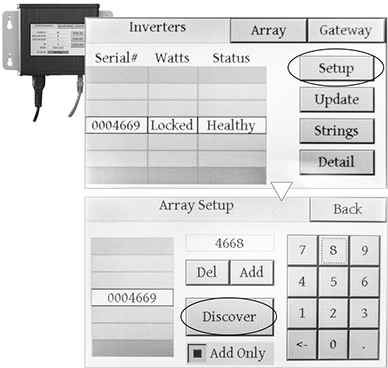FAQ
Frequently Asked Questions
Gateway FAQs
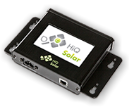
Beyond the usual monitoring portal information, data on system performance may be downloaded in three other ways:

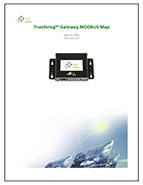
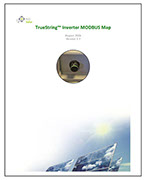
A rough calculation for normal traffic can be made using the following:
- 256 bytes per inverter per minute while generating (daylight hours).
- 256 bytes per inverter per 10 minutes while not generating (night time hours).
Worst case is to assume longest summer day hours to calculate and give some extra padding to be sure you don’t hit any installation limits, such as might be imposed by cell modem plans for example.
Other possible data usage:
- Firmware updates take about 1 megabyte of transfer. These are fairly rare.
- Remote diagnostics uses data at an unpredictable amount as it depends on what is being done at the time. These occurrences are rare also.
An example calculation for a system with 20 inverters is as follows:
- Assuming 14 hours daylight and 10 hours night time with 20 inverters
- 20 inverters x 256 Bytes x 60 (intervals per hour) x 14 hours = 4,300,800 Bytes /day
- 20 inverters x 256 Bytes x 6 (intervals per hour) x 10 hours = 307,200 Bytes /day
- 4,300,800 + 307,200 = 4,608,000 Bytes (4.608MB) total per day
- Assuming a 30 day billing period, 4.608MB x 30 Days = 138.24MB per month in normal usage for 20 inverters.
Recently added functionality on the Gateway gives greater insight during installation on possible issues. The ‘Array Summary’ screen has been updated with “indicator lights” showing the status of four critical elements. A green indicator means the following:
- AC – The Gateway’s AC wiring is correct. (Neutral is connected, voltage in within tolerance, no dangerous spikes present.)
- SD – The SD card is inserted and the file system is OK.
- NET – The network is connected. This doesn’t necessarily mean that it’s able to communicate, but the cable is OK and the Gateway has acquired an IP address.
- HIQ – The Gateway was able to contact the HiQ server and upload data
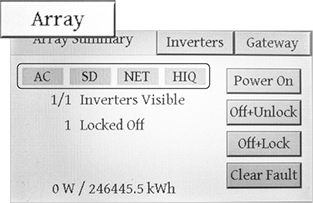
Occasionally PV installs using TrueString inverters experience issues with the Power Line Communication (PLC) used to communicate between the inverters and the HiQ communication gateway. One reason for this can be that the nearby grid is sufficiently low impedance that the PLC signal ‘leaks away’ and has insufficient strength remaining for proper communication to occur. In this instance the PLC Cores provide a means of increasing grid impedance in the frequency band used by the HiQ system to ensure sufficient signal remains. External noise can be another source of issues.
HiQ Solar offers third party PLC Core common mode chokes as an ordering convenience. More information can be found in the PLC Core Guide.
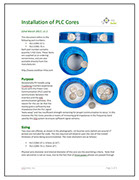
A recent Gateway firmware update made improvements to the discovery functionality. The ‘Discover’ button has been promoted to having a screen all to itself – from the ‘Inverters’ page, press ‘Setup’. This brings up a page dedicated to the discovery, addition and deletion of inverter serial numbers from a site locally.
Also included is a default discovery search that does not delete previous entries, only adds new units it finds to the existing site list. For a clean-sheet search the ‘Add Only’ check-box can be unchecked.
